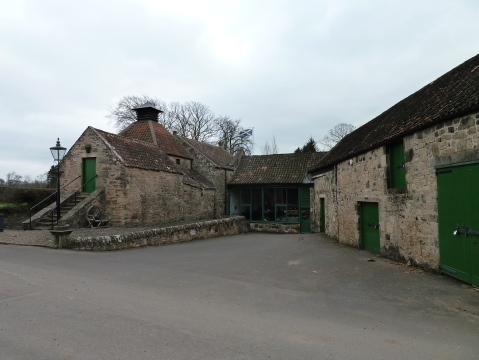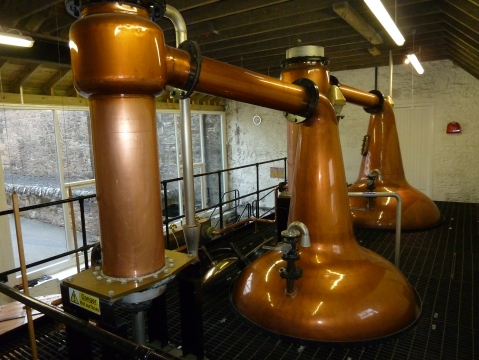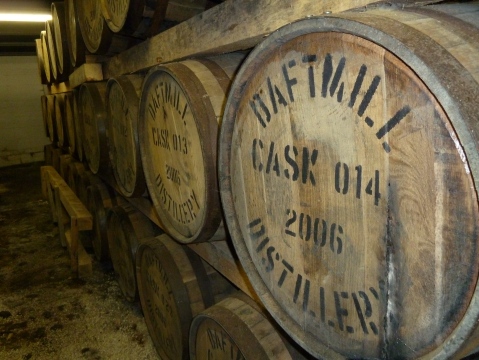The Curious Story of Glenkura Springbank
May 22, 2012 § Leave a comment
I was recently asked to evaluate a private bottling of 18-year-old Springbank by J David Simons, the Glasgow-based writer, in the company of Stephen McGinty, McTears whisky valuer. David was pondering that after taking some of the cask as a 15-year-old for himself (see label below) and the rest of his syndicate, was it time to bottle the remainder now, or let it wait a while longer? While Stephen and I got to grips with this conundrum, David explained the curious existence of Glenkura Springbank. “I actually bought the whisky with two friends when I was working as a visiting professor at a university in Japan in 1993,” David told us. ” The three of us were living in a seaside town called Kamakura which is about 50 miles south of Tokyo. The name Kamakura in Japanese means storehouse (Kura) of the short sword (Kama). Consequently, when we were looking for a name for our whisky we decided to call it Glenkura – i.e. Glen (valley in Scots) and Kura (storehouse or perhaps distillery in Japanese). A few years later when I was looking for a fictitious placename for my
novel, I chose Glenkura, then I put a distillery there, then I had my characters drinking Glenkura whisky. That is how the whisky figures in the novel and also why we have Japanese lettering on the label.”
That story he was writing would eventually be published in 2008 as The Credit Draper, the story of a Jewish immigrant to Scotland in 1911 who sells cloth to the Hebridean communities before falling in love with a crofter girl. To precis the story a little Stephen and I both agreed that the whisky would gain nothing by remaining in cask any longer and we recommended that David bottle it now. As it stood it was an elegant and moreish ex-bourbon malt and was right on the nail at 18 years old. The result is that one of the remaining 36 bottles is being auctioned at McTears on June 6th. It will be interesting to see what it fetches.
Daftmill Distillery … not as daft as it sounds.
May 11, 2012 § Leave a comment
I have made two trips recently to a small farmyard distillery in Fife. The first resulted in the following article being published in Whisky Magazine (Issue 103).
Francis Cuthbert is no ordinary distiller. He also happens to be a farmer who, along with his brother Ian, tends to 1,000 acres of prime arable and beef stock land just south of Bow of Fife, off the A91 between Auchtermuchty and Cupar. This might make him something of an oddity within the industry today but a couple of centuries ago his twin occupations would have been regarded as fairly normal. Prior to the late-Victorian distillery-building boom much of Scotland’s malt whisky industry had evolved out of farmyard concerns that were dotted around the Highlands and Islands, aside from the grain distilleries, such as Kennetpans and Kilbagie, which were centred in Clackmannanshire and of a truly industrial scale, largely satisfying the voracious London market. Farming and distilling were symbiotic activities that complemented each other, so when the Cuthberts decided in 2003 to create a distillery on their achingly pretty Daftmill Farm, they were simply reverting to type.
But why did they do it? ‘That’s a good question’, Francis pondered. ‘I thought I was mental at the time but our motivation lay in the fact that we were passionate about Scotch whisky and it simply struck us as something that we could achieve if we set our minds to it.’ What would have been glaringly obvious to any casual observer who arrived at Daftmill Farm in the early 2000s was that everything required to create malt whisky was in place already. It simply needed exploiting. The grade B-listed farm buildings that the brothers decided to convert consisted of a three-sided courtyard arrangement with the old mill building operating as the grain store and mash house along with some neighbouring lean-to’s and other storage buildings opposite converted to stillhouse and bonded warehousing respectively.
But before any of that could be undertaken, the water source had to be analysed. Daftmill’s artesian well water was passed by Dr Harry Riffkin of Inverkeithing consulting chemists Tatlock & Thomson, and the brothers duly applied for planning permission in June 2003. After some typical local authority delays, this was eventually approved later that year and over the course of the growing season of 2004 the external works were completed with the conversion of the old mill and the adjoining buildings. At the same time the farm’s stick shed was converted into the distillery office. After lying fallow for the winter, work recommenced in the spring of 2004 with the internal fabrication and installation of plant including two stainless-steel washbacks, the copper-topped mashtun and all the associated pipework. Spirit first ran in December 2005, but only after Francis had learned the craft at Raymond Armstrong’s Bladnoch Distillery whisky school.
As much as possible of the project was locally sourced within a five-mile radius with Houston’s of Cupar undertaking all the stainless-steel fabrication including the washbacks while Gray Fabrication, also of Cupar, installed all the steel decking and mezzanine floors. The only exception was that Forsyth’s of Rothes made the stills and condensers but the local electrician, Adam Nielson undertook all the pipework and circuitry. Francis has grown and supplied award-winning distilling barley on the farm for many years and some of this is now malted by Crisp of Alloa for Daftmill’s own requirements so the operation is about as close in concept and execution to the original farmyard distilleries of the early 19th century as possible.
At present Francis distils throughout the year on a periodic basis depending on circumstances. With 1,000 acres to tend, the distillery cannot be a continuous activity. With a capacity of 90-100,000 litres per annum, around 20,000 litres of spirit are currently produced. The process is very much small-batch. A one-tonne mash produces 5,500 litres of 7.5-8%-abv wort to which is added dried yeast and fermentation in the curiously tall pair of 7,500-litre washbacks is then allowed to run for 72-96 hours. The spent grains from the mashtun are fed to the farm’s cattle as a welcome warm treat. A Monday mash will therefore be distilled half on a Thursday, half on a Friday with the 3,000-litre wash still taking a roughly 2,700-litre charge. This produces a 24%-abv, 1,500-litre charge for the 2,000-litre spirit still which Francis initially runs for just five minutes on foreshots before switching to the middle cut which results in a fruity spirit of around 72-74% abv, higher than the industry norm. A lot of copper contact, the large surface area of the condenser, as well as an upward-sloping lye arm which promotes reflux, also influence the character of Daftmill.
The collected spirit is then reduced to 63%abv and filled into ex-bourbon casks, mostly from Heaven Hill, and a smaller quantity of Spanish ex-oloroso butts which rest next door to the stillhouse in the former farm storehouses. The ex-bourbon barrels are best suited to the Lowland character of the spirit and will form the bulk of the malt that Francis will only bottle ‘when it is ready’. From a nosing of both the ex-bourbon and the ex-sherry I would concur with his estimate that this is likely to be around 2014. Certainly Daftmill is not far away from being a finished product and is maturing extremely well. There are plenty of sweet, citrus and floral notes with classic vanilla, butterscotch and custard overtones with some hints of Weetabix. The ex-sherry has fruitcake and Christmas pudding tones with a big sweet whack. When it is eventually bottled it will be available only through specialist retailers at cask and reduced strengths and will be in extremely limited supply so the Cuthberts should see a good return on their investment. Mischeviously Francis remarks as he locks the bond doors before I leave, ‘Of course, if it’s really good we might keep it all to ourselves … and if it’s rubbish, we’ll not be selling it anyway!’
It may have a daft name, but this is one distilling venture that will never be called mental.
DISTILLERY INFO
Daftmill Distillery
Region: Lowland
Owners: Cuthbert family
Address: by Cupar, Fife, KY15 5RF
Tel: 01337 830303
Tours: Strictly by appointment.
TRIVIA
The name arose from the fact that the local burn appeared to flow upstream, so was called the Daft Burn. When the mill it powered was built it was named the Daft Mill.





